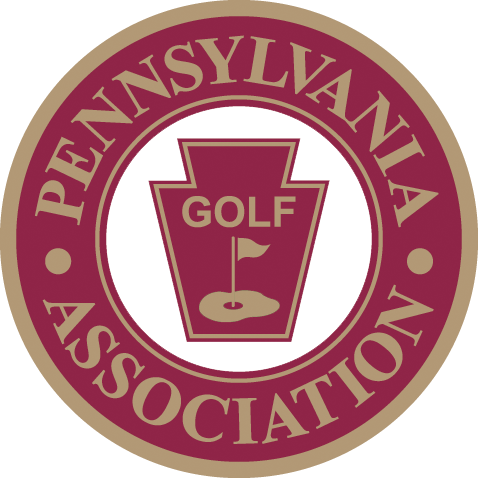| Brookside CC of Allentown 901 Willow Lane Macungie, PA 18062 www.brooksidecountryclub.org Architect: J. Franklin Meehan | |||||||||||||||||||||||||||||||||||||||||||||||||||||||||||||||||||||||||||||||||||||||||||||||||||||||||||||||||||||||||||||||||||||||||||
| |||||||||||||||||||||||||||||||||||||||||||||||||||||||||||||||||||||||||||||||||||||||||||||||||||||||||||||||||||||||||||||||||||||||||||
| Golf Professional | David Fields | (610) 966-5269 |
| General Manager | Kris J Fair, CCM | (215) 646-2300 |
| Superintendent | Justin Rieth | (215) 355-2234 x24 |
Course Slope & Ratings
| Brookside CC of Allentown Tees | Front 9 | Back 9 | Course | ||||||
|---|---|---|---|---|---|---|---|---|---|
| Rating | Slope | Rating | Slope | Yards | Rating | Slope | Par | ||
| Orange | Male | 29.9 | 111 | 30.2 | 108 | 3706 | 60.1 | 110 | 71 |
| Green | Male | 32.4 | 118 | 32 | 126 | 4843 | 64.4 | 122 | 71 |
| Green/White | Male | 32.7 | 132 | 33.4 | 122 | 5249 | 66.1 | 127 | 71 |
| White | Male | 33.6 | 133 | 34.6 | 127 | 5706 | 68.2 | 130 | 71 |
| Blue | Male | 35.1 | 138 | 35.7 | 130 | 6276 | 70.8 | 134 | 71 |
| Black | Male | 35.6 | 138 | 36.3 | 133 | 6552 | 71.9 | 136 | 71 |
| Orange | Female | 30.9 | 106 | 31.7 | 111 | 3706 | 62.6 | 109 | 73 |
| Green | Female | 34.1 | 119 | 35 | 126 | 4843 | 69.1 | 123 | 73 |
| Green/White | Female | 35.2 | 122 | 36.2 | 130 | 5249 | 71.4 | 126 | 73 |
| White | Female | 36.1 | 126 | 37.7 | 135 | 5706 | 73.8 | 131 | 73 |
| Blue | Female | 37.9 | 136 | 39 | 141 | 6276 | 76.9 | 139 | 73 |
| Black | Female | 39.8 | 143 | 38.2 | 135 | 6552 | 78 | 139 | 73 |
Directions
Club History
Of all the clubs in the Golf Association of Philadelphia, the Brookside Country Club of Allentown is the only one to be conceived in a sporting goods store. Harold Witwer and Harold Jones owned and ran the store; and it was here, amid baseball bats and basketball backboards and football helmets and an assortment of hickory-shafted golf clubs and inventively-dimpled golf balls, that the two of them came up with the notion that Allentown could use a second country club (Lehigh Country Club had been functioning for almost 20 years now). Soon there were so many interested in the project that the meetings had to be held in the Moose Hall, on North Tenth Street. And when the group learned that the Brookside Farm of the Singmaster estate was available for $12,500, C. L. McElyea immediately obtained an option on it by "issuing his personal check for ten dollars."

Original clubhouse buildings at Brookside of Allentown looking from the northeast.
The new club was organized in August 1929, and a total of 154 acres acquired. Oliver Havard described it as "... beautifully rolling ground with some fine natural hazards including a pretty little brook that winds down near the buildings and crosses the road." The primary sport would be golf, but there would also be tennis, swimming, quoits, and croquet.
The first board consisted of Oliver Havard, Charles Oakes, Robert Trinkley, Edwin Kohler, Nolan Benner, George Brooks, Zeke Witwer, Edwin Pidcock, Clarence Harman, Lyman Josephs, C. L. McElyea, David Williams, Lee Chestnut and Claude Yost. Havard was named president; Oakes, vice president and treasurer; Trinkley, secretary; Kohler, solicitor.
Havard, an executive at one of the area’s largest companies, Portland Cement, was granted a leave of absence to guide the building of the course and the transformation of a barn into the clubhouse. Another prominent Allentonian, General Trexler, who owned a large farm nearby, offered the use of his foreman, his farm machinery, and his farm labor to construct the 18-hole golf course free of charge, the only stipulation being a return of the machinery in suitable condition. Nor were volunteers lacking when the club’s construction committee issued a call (not without humor) to all members in early 1930:
Dear Members: ... Lots of volunteers are needed and we can use all, regardless of age, sex or previous conditions of servitude. Bring your tools, too. Shovel, rake, fork, hoe, hammer, axe, hatchet, pick, old broom, pail, wheelbarrow, steam shovel, or what you have. Come as early as you can Saturday and report for work to General Havard in the Field Office back of the barn. P.S. You may get your hands dirty, and it would be well to wear your old clothes. Second P.S. If it rains, come anyway, and you can husk corn inside the barn.
Meanwhile, preliminary work was well underway on the golf course, which Frank Meehan had been commissioned to design. Preparing the land was a difficult task. Many tons of stones and rocks had to be removed. Havard devised a tool of spikes and hooks for digging that was found to be extremely useful by the 50 to 75 members who gathered to work on weekends.
On Nov. 9, 1929, Allentown’s Mayor Malcolm Gross, before a gathering of distinguished guests, used a gold niblick to take a divot that marked the start of course construction. A nine-hole course with sand greens was routed through the lower meadow and put into play six months later. On Oct. 3, 1930, President Havard could tick off the club’s accomplishments, in large part due to the dedication and the physical effort of many members: the construction of an 18-hole golf course, the building of a swimming pool and tennis courts, the installation of a sewage disposal plant, the renovation of quarters to house the greenkeeper and the golf professional, the planting of 6,000 trees, as well as a number of lesser projects.
